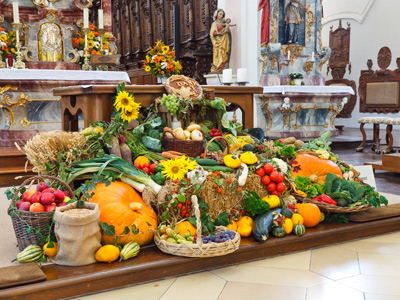

Catholicism - Worship: Where and How
This GCSE RE quiz on Catholicism focuses on the where and how of worship. ‘Worship’ can carry many meanings, but in original and general essence it means the way in which one person, or a like-minded group, expresses devotion to a deity ~ in this case, the Christian God in the three Persons of the Trinity. At one time or another, Catholic worship may include no fewer than seven Sacraments, many accompanied by rich and potent gestures and sensory experiences: to those from perhaps simpler or humbler religious backgrounds, the ‘specialness’ of the space and behaviour in a Catholic church can seem particularly striking.
For many centuries ~ we might even say 98% of the time of the Church’s existence ~ worship was done in the Latin language, but within the past 50 years it has been officially liberalised into the vernacular, i.e. approved forms of service in the everyday local language of the worshipper (something the Protestants insisted on about 10 times as long ago, at the Reformation … which kicked-off pretty well exactly five centuries back, in 1517).
* The whole outfit, in form and function, is not entirely dissimilar ~ at first glance, at least ~ to a lump-sugar receptacle from a formal, perhaps silver, country-house tea service
People of a simpler religious tradition sometimes look askance at all these 'smells and bells' etc., perhaps since they are not attuned to God being offered earth's very finest in worship. All true worship should entail elements of specialness, dignity, focus and 'the numinous', and these contributory sensory elements are intended to harmonise to create that effect. Some more traditional Catholics, on the other hand, may find certain types of Protestant worship 'aesthetically thin' or even tinny, alarmingly direct rather than more contemplative, and bafflingly informal rather than recognisably liturgical. Their reciprocal label for such events and their music might well be 'happy-clappy'. The debate continues ... but usually almost anyone can find a style of worship that suits their culture and personal disposition. (If you're a Catholic, it's probably in the blood!)
Ready for more?
not all...
quizzers. Try to win a coveted spot on our Hall of Fame Page.






